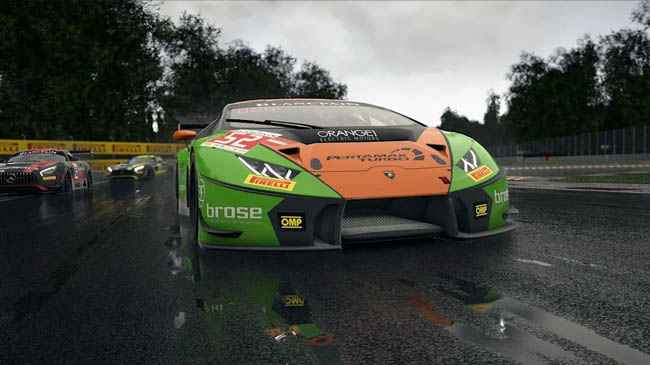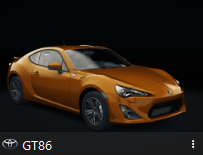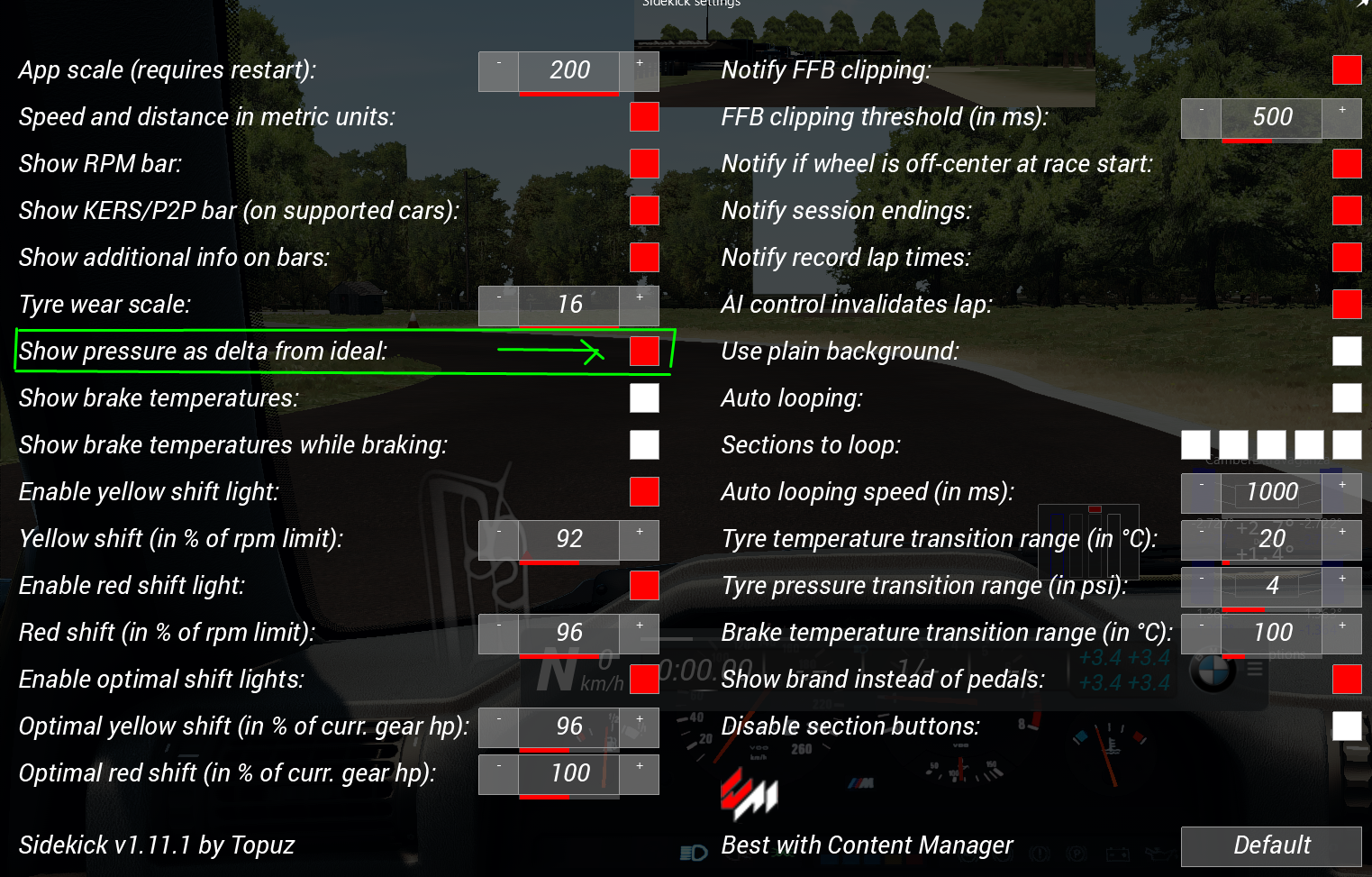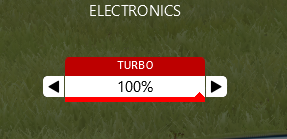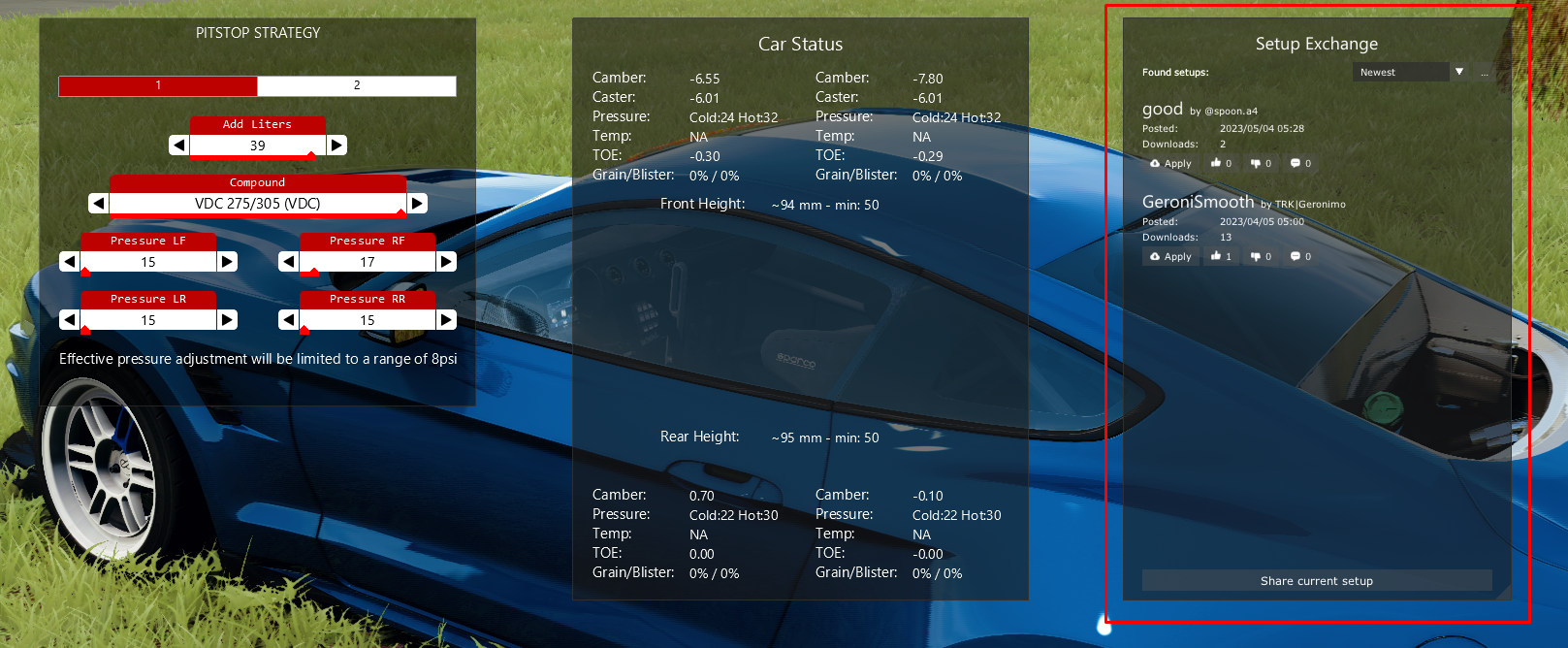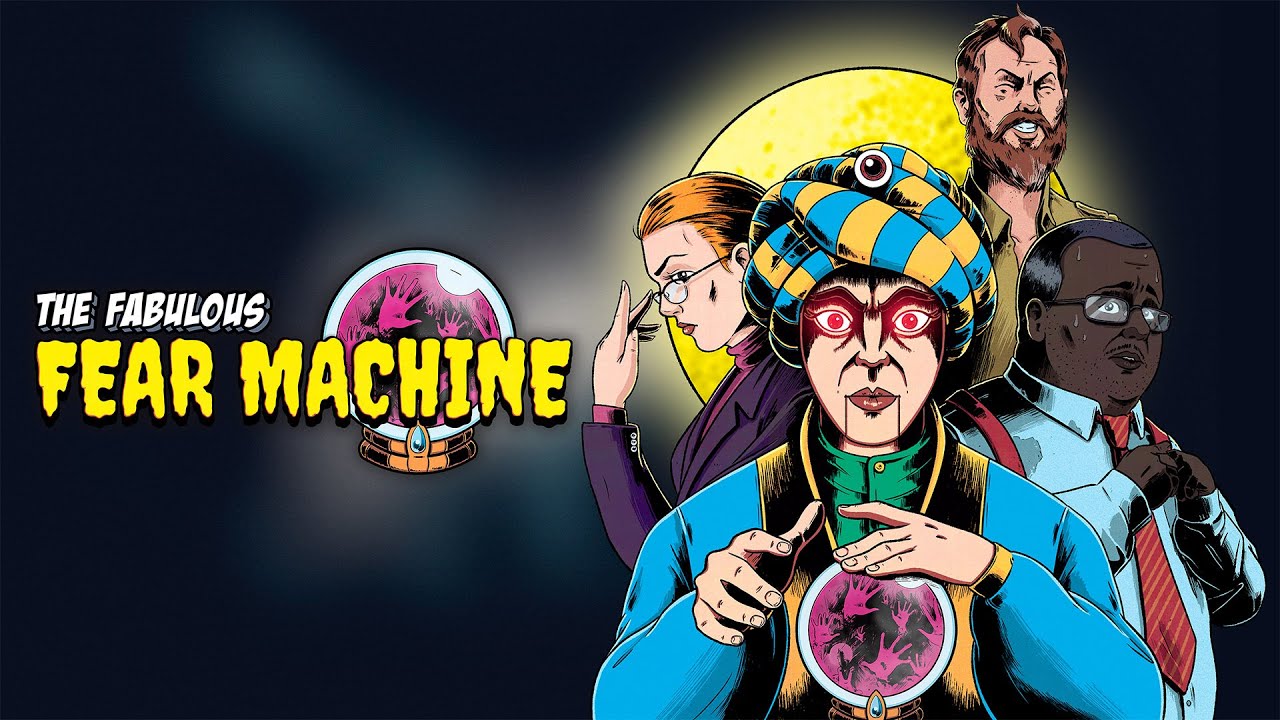Basics drift setup
types of drift cars
In Assetto Corsa you can differentiate between 3 classes of drift cars:
A – Beginner drift cars (Toyota GT86, Toyota AE86 Drift) (Less than 300 BHP)
B – Street drift Cars (BMW M3 E30 Drift, M3 E92 Drift, Supra MKIV Drift) (Between 300 – 600 BHP)
C – Pro drift cars (WDT Pro pack, VDC Pack) (Over 800 BHP)
Most servers online feature street drift cars, as they are moderately easy to get into, yet hard to master.
On beginner drift cars you’ll have less setup options than on pro drift cars.
Setup
Gears
You should strive to use as little gears as possible (max 4), as changing gears during drifting makes it harder to control the car.
Best gearing is when it’s long enough to not constantly bounce back from the rev limiter, yet short enough, so the RPMs are in the high range at all times.
Below optimal gear settings for Pro drift car. Notice how long gearing is set. You can drive pretty much all of the track on the 2nd gear.
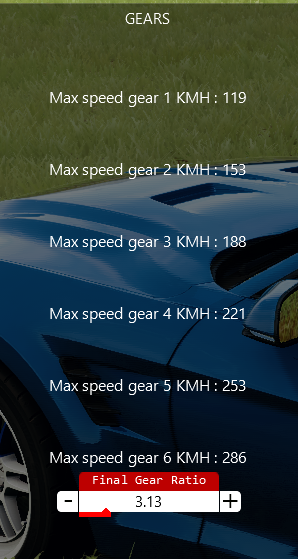
Tyres
Compound:On Kunos cars, tyres differ based on their grip, going from most grippy to least grippy:
US, SS, S, M, H, – full slicks (not usable in drifting)
SM – semi-slicks
ST – street
SV – Street 90s
Generally you should use tyres with least grip possible, as that makes drifting much easier. For instance, for M3 E30 the best tyres are SV, while most players go with racing SM tyres, which don’t let tyres lose traction.
PressureBase of pressure setup should be the sidekick app. It’s a must have for Assetto Corsa. Download it and enter settings by clicking hamburger button on the right of the app:
On the image above you can see tyre pressures set as delta from ideal. +3.4 means, that you need to increase pressure by 3 psi, to arrive at ideal tyre pressure. For drifting, you should strive to have +0 +0 on your front tyres for best grip, and more than +4 on your rear tyres. Low tyre pressures on rear tyres will make them grippy which is not optimal for drifting. Too high tyre pressures can make the tyres pop.
Delta values change as you drive, so do at least one full lap, and then adjust pressures.
100 % turbo generates more power – makes the car most oversteery. If you can’t control your car, decrease turbo to your liking.
Beware: some pro drift cars have massive turbo lag. VDC Nissan GTR R35 is a book example of such car. You need to kick the clutch to keep RPM high. Drifting such cars is much harder.
Alignment

Camber
To adjust camber you can use another must-have app which is CamberExtravaganza. On most cars ideal front camber is smaller (slider more to the left) than rear camber (slider more to the right, than on front). The smaller camber, the more sideways grip your car will have, which means the you’ll have more grip in corners. You need grippy front tyres; not so much rear tyres.
Increase TOE to make the car turn slower.
Drivetrain
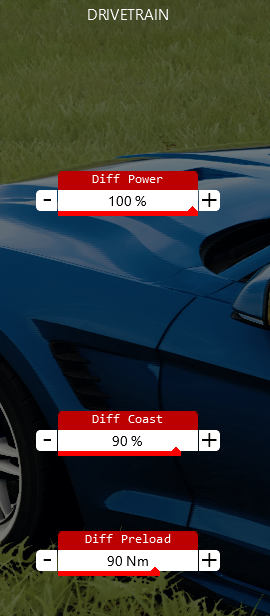
It’s the most important setting.
Diff power
– increasing it makes car more eager to gain angle. If the car is uncontrollable, you should decrease it.
Diff coast
– decrease it to make the car eager to switch directions (inertia drift) when coasting (not using gas pedal). Increase it to make the car more stable when coasting.
Diff preload
– increase it to make the car more resistant to direction changes at all times. Comes in handy when drifting at high speeds (>120 km/h)
Suspensions

wheel rate
If the car oversteers too easily: increase front wheel rates and decrease rear wheel rates
If the car understeers: decrease front wheel rates and increase rear wheel rates
ARB
Increasing rear ARB creates oversteer
Increasing front ARB creates understeer
Generic
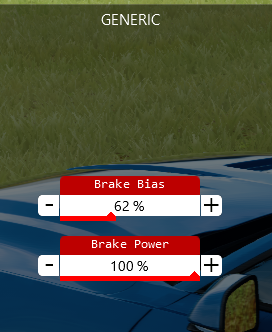
Brake bias
In drifting, we want the brake to induce oversteer, to rotate the car more effectively close to walls.
Feel free to decrease the value.
You can always see what other people used on their setups. Activate “setup exchange” in CSP for more setups:
